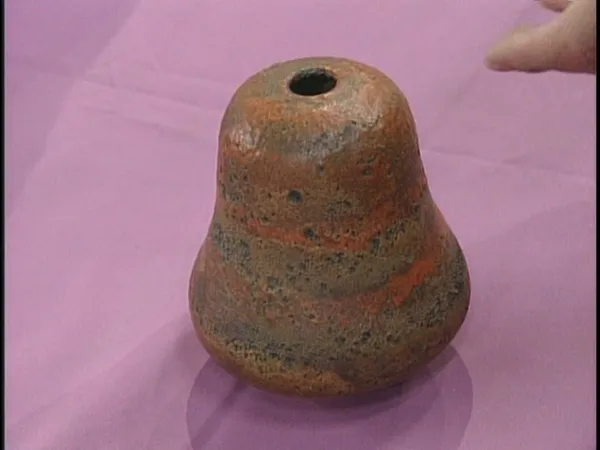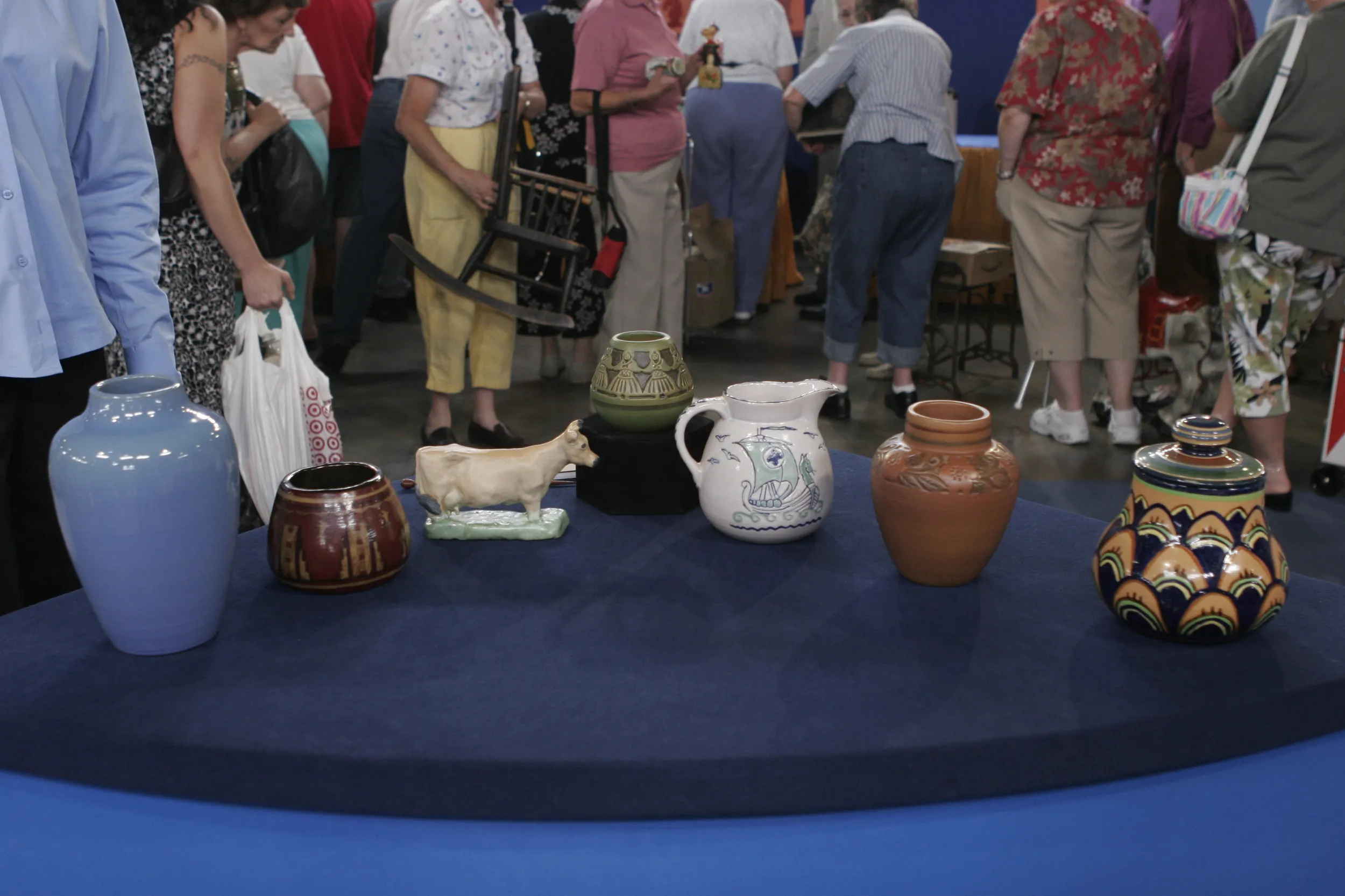APPRAISER: What you brought here today is a Pacific Northwest coast carving made of argillite, which is a material that's between shale and slate, and there's a few volumes written about it, and they call it the coal that won't burn. Now, how did it come into your family?
GUEST: It's my great-grandfather's, and his sister lived in Ketchikan, Alaska.
APPRAISER: Okay.
GUEST: And she gave it to him as a gift.
APPRAISER: That makes sense. This was the kind of the enduring curio that came out of the early-19th-century Pacific Northwest coast. This material is mined in Queen Charlotte Island by the Haida Indians, and there was a famous carver by the name of Charles Edenshaw. He was sort of the mentor of this movement, and like I said, this is the most enduring curio that came out, these totemic argillite totem poles with these lovely carved features on it. Now, this has some potential of being from the Edenshaw school because of the way that he crosshatched his designs. There are a few design elements that are not here. You noticed when it came to the table, the first thing I did was held it to my face?
GUEST: Mm-hmm.
APPRAISER: There's a lot of reproductions of these, and they're pretty good museum reproductions. So I wanted to feel it was cold, because the natural stone will always remain cold under any, virtually any circumstance. There's some problems with condition. His little head had come off. The bear's head had come off at one point. But on today's marketplace, you're probably looking at $3,000 to $4,000 for this if it was come to sale, because it's so finely carved. And with a little more investigation, it could, it might be a Charles Edenshaw school piece.
GUEST: Oh, my gosh.








